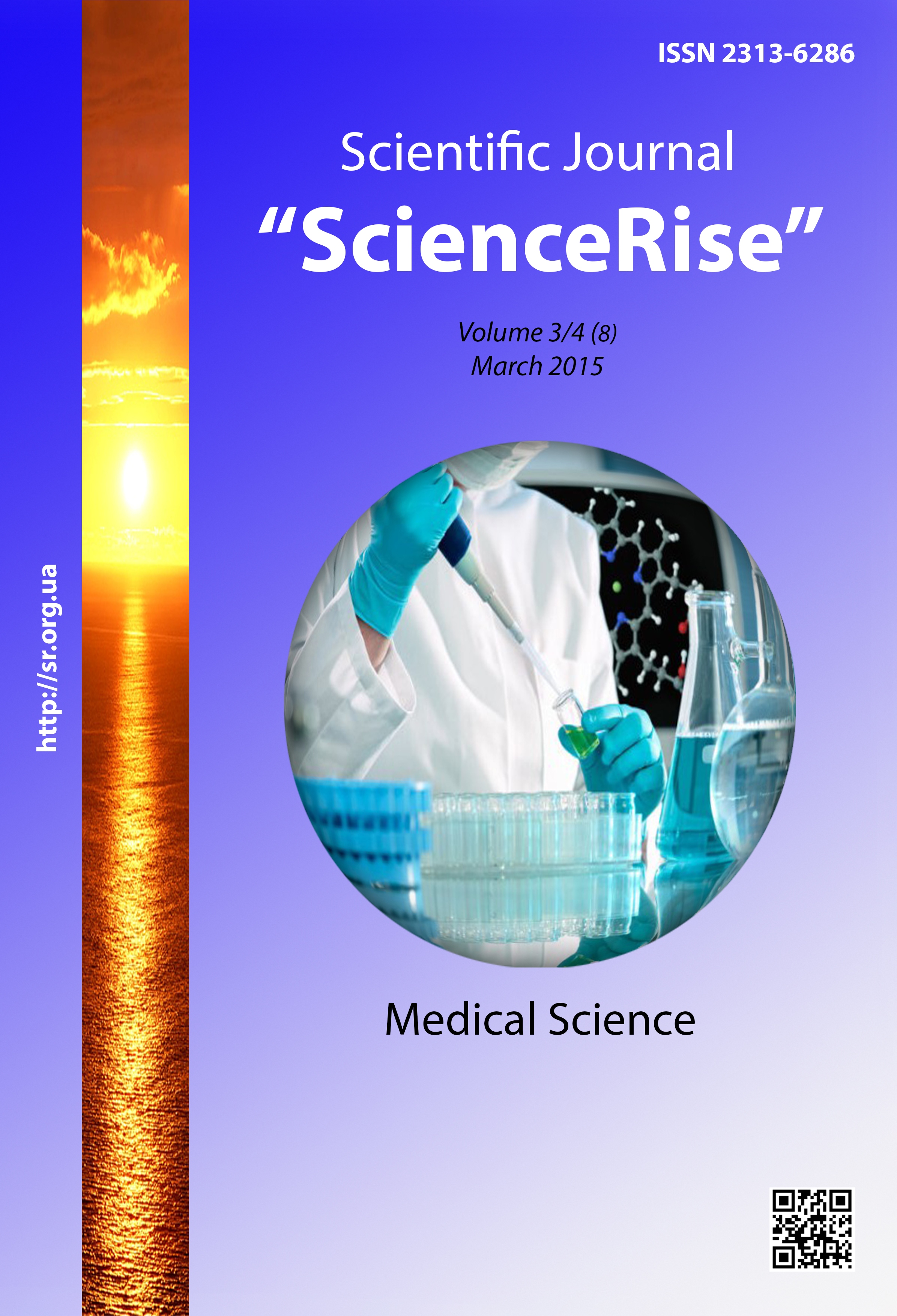The features of combined skull traumas
DOI:
https://doi.org/10.15587/2313-8416.2015.39182Keywords:
combined trauma, traumatic brain injury, polytrauma department, emergency hospitalAbstract
Combined trauma is a topical medico-social problem of the society, one of actual problems of medicine. Interest to her has especially grown lately in connection with increase of quantity of victims with such kinds of damages.
Methods. Case records of 5482 patients with combined traumatic brain injury from which at 2724 (46, 66 %) the scull trauma, were on treatment in polytrauma department in the Kharkov city emergence hospital during the period with 2010 on 2014 has been established and analyzed.
Result. Trauma as a result of road accident have received from 44,7 to 50,2 % of victims, at falling from height a trauma have received from 12,5 to 17,4 % of patients. The parity to a sexual sign in different years remains at one level and made: 68, 4–71, 7 % of men and 31, 6–28, 3 % of women accordingly. Victims of young and middle age make the most part. Alcohol in blood at receipt has been found out in 32, 5 % of victims, and at patients with an easy combined traumatic brain injury this indicator has made 25, 3 %, and with heavy combined scull trauma alcohol in blood has been found out in patients in 37, 2 % of cases.
Conclusions. It is shown that skull-skeleton, skull-thoracic and skull-multiply traumas play the leading role in structure of light traumas, and skull-multiply trauma play the leading role in hard multiply skull trauma and it needs more attention from doctors of all specialties
References
Lebedev, V. V., Krylov, V. V. (2000). Emergency neurosurgery. Moscow, Russia: Medcine, 568.
Ankin, L. N. (1995). Unfallchinirgie сlinic experience. J. / Ort. Travm. and Prost., 3, 70–71.
Elskiy, V. N., Klimovskij, V. G., Dlugoklanskij, D. M., Krjuk, Ju. Ja. et. al. (2001). Method combined torocoscope restoration of a bone skeleton of a breast at combined damages. ХІІІ congress the orthopedists of Ukraine. Kiev, Ukraine: 62–63.
Polishuk, N. E., Pedachenko, G. A., Polishhuk, L. L. (2000). Alcoholic intoxication in clinic of emergency neurosurgery and neurology. Kiev, Ukraine: NMAPE, 204.
Pedachenko, G. A. (1996). Combined scull trauma. Kiev, Ukraine: Mariam – A, 31.
Mironov, G. М. (1990). Medical aid at polytrauma. J. / Ort. Travm. and Prost., 7, 63–67.
Hvisuk, N. I., Ryndenko, V. G., Zajcev, A. E. et. al. (2001). Condition of rendering assistance by the victim with polytrauma. ХІІІ congress the orthopedists of Ukraine. Kiev, Ukraine: 12–14.
Greenberg, M. S. (2010). Handbook of Neurosurgery. Moscow, Russia: Medpress–inform, 1008.
Downloads
Published
Issue
Section
License
Copyright (c) 2015 Виталий Григорьевич Полторацкий

This work is licensed under a Creative Commons Attribution 4.0 International License.
Our journal abides by the Creative Commons CC BY copyright rights and permissions for open access journals.
Authors, who are published in this journal, agree to the following conditions:
1. The authors reserve the right to authorship of the work and pass the first publication right of this work to the journal under the terms of a Creative Commons CC BY, which allows others to freely distribute the published research with the obligatory reference to the authors of the original work and the first publication of the work in this journal.
2. The authors have the right to conclude separate supplement agreements that relate to non-exclusive work distribution in the form in which it has been published by the journal (for example, to upload the work to the online storage of the journal or publish it as part of a monograph), provided that the reference to the first publication of the work in this journal is included.

